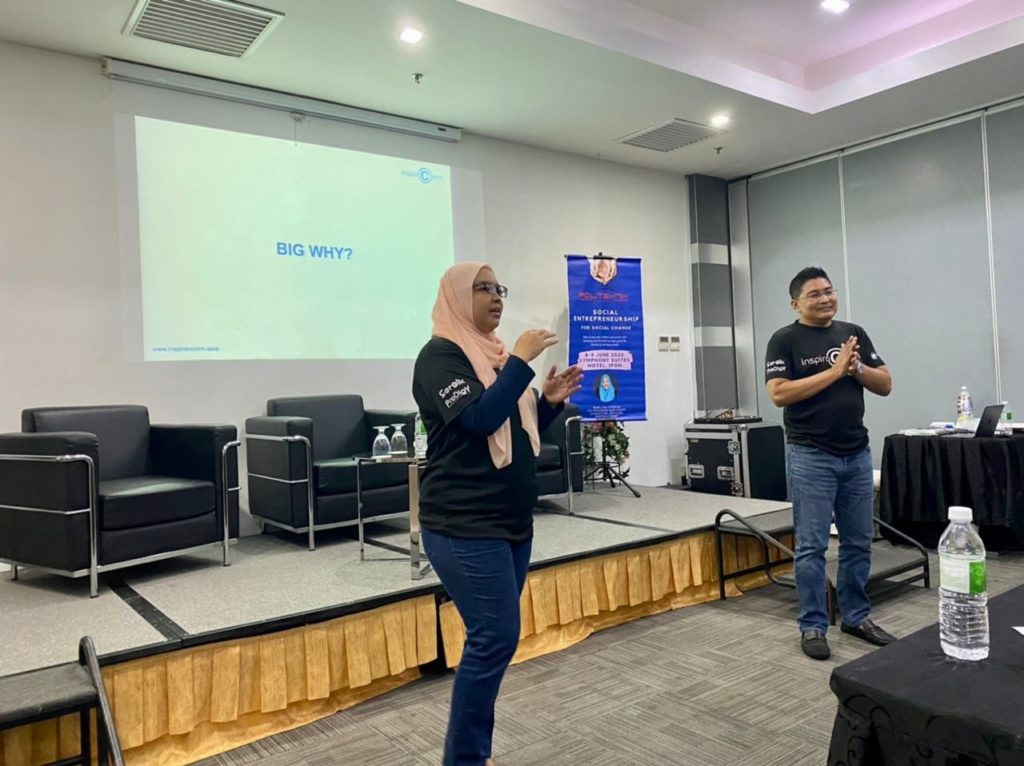By Nurlina Hussin

As you may be aware, the level of awareness on sustainability in Malaysia is still relatively low. I first discovered the Sustainable Development Goals (SDGs) in 2016 – 2017 and soon realised how crucial they are for our future development.
At that time, I noticed that only a few companies were embarking on sustainability as we organised an SDG bazaar at the Sunway Putra Mall in Kuala Lumpur.
Today, there is increased awareness on sustainability. Some people see it as a must-have, some as not a nice-to-have in many companies. Whatever it is, we are seeing that such awareness is translated into action for some. For sure, sustainability is being integrated throughout big organisations and public-listed companies.
We can now see major decisions such as the appointment of suppliers and actions against a backdrop of sustainable goals such as human rights or diversity or even improving work environments in the workplace. Somehow, sustainability is now part of the core strategy of businesses today, trickling down to customers and other stakeholders. Sustainability is now seen as a source of value creation for many businesses.
No doubt, I understand that transitions do take time. Simply appointing a chief sustainability officer in a company is not enough. There needs to be a case for the whole company to embrace sustainability at all levels and across different functions.
Some companies may have commitment statements and sustainability programmes lined up annually. The transition towards sustainable businesses is not just about having the right language, pledges, plans, programmes or policies put in the right place. It’s actually about strong leadership – to have an inspired and inspiring leader at the top to kickstart into action.
You can be a sustainable leader at your position, not necessarily it has to start from the top. You could be a CSR manager or founder of a startup, an employee in corporate communications or a student in sustainability in any part of the world, and yet have a broad and meaningful impact on sustainability.
In essence, you can be a changemaker. No matter what industry you are in or where exactly you are in your career, your decisions and actions today will determine your legacy as a sustainable leader well into the future.
We must start to talk about the role of leaders in making these transitions possible. We need to start to develop a generation of sustainable leaders everywhere, with the right characteristics, mindsets and skills, to help solve the world’s challenges while balancing other stakeholders’ needs for long-term financial returns.
We need these sustainable leaders to be strategic and have a strong sense of urgency, ambition and direction because actions taken by corporations affect people, our planet and prosperity across borders and far beyond what any individual or government could do.
You may be wondering what sustainable leadership looks like? To me, sustainable leadership is a leader who is bold and brave to build a workforce that can make changes relating to sustainability. We strongly believe that it involves people who are willing to challenge the status quo, someone who is more interested in serving others, especially on how things can be done differently as opposed to how it used to be done previously or currently.
That leader is someone who spends time looking outside for solutions, and not just focusing on the inside. Someone who can catalyse a team of people to go after big complex assignments to help solve big real-world problems, where you don’t know what the exact result will be but you are making progress along the way.
And you stop early when it looks like failure is cropping up and you have the resilience to pivot and keep going on something new to make things happen.
We see this noble dimension in social entrepreneurship for social entrepreneurs like me to demonstrate sustainable leadership, be bold enough to think big, and have good intentions to create big impact with grit.
We see sustainable leadership in some corporations today in people who are CEOs, board directors, executives and team managers, who can scale up their sustainability leadership mindset. People who can take the lead as role models within their organisations to steer their sustainability agenda. That’s why one of our missions here is to help connect the dots and influence to encourage more people to take a more collaborative approach between corporates, government and social entrepreneurship to achieve similar visions and goals in solving global issues related to diversity, poverty alleviation, providing quality education and good health and well-being.
Sustainable leadership acts to embed sustainability throughout their organisations’ daily operations, not just with their employees but also with suppliers and other key stakeholders.
Like I mentioned previously, change management is tough for any organisation. Hence, it takes sustainable leadership to have the core values and mindset to make key decisions such as how to embed the passion of sustainability into an organisation’s culture so that it guides the decision-making process on everything from where to invest, to what to cut, what to budget for and whom to hire.
Another key question to consider is how do you accelerate the numbers and success of leaders who care about sustainability so that the pyramid grows exponentially and the actions take over? This is why measuring social impact is very important to showcase impact achieved as a motivation to sustainability leaders.
Nurlina Hussin is an International Certified Professional Trainer (ICPT) and Experienced Social Entrepreneur at InspiraComm, an organisation aimed at changing mindsets and lives